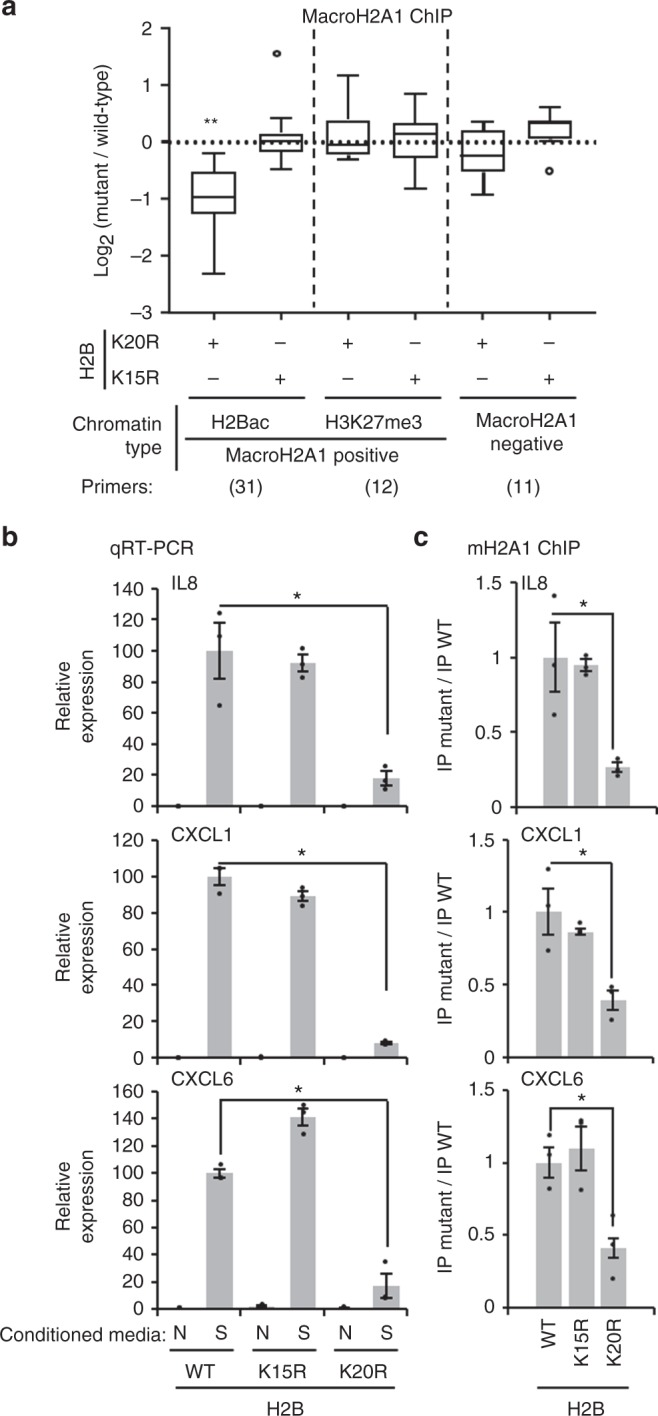Fig. 5.

H2BK20ac promotes macroH2A1 deposition into H2B-acetylated chromatin. a Endogenous macroH2A1 ChIP-qPCR from cells expressing H2B constructs described in Fig. 3b using primers targeting locations within the indicated types of chromatin (regions containing either H3K27me3 or H2B-acetylated chromatin that are associated with macroH2A1 or lack macroH2A1). Data is displayed as a ratio of mutant H2B to wild-type H2B. Center line is the mean and bounds are 95% confidence interval of the mean. (*p = 1.6 × 10−11). b RT-qPCR for the indicated SASP genes from cells described in Fig. 3b that were subjected to paracrine senescence with conditioned media from H-RasV12-mediated oncogene induced senescent cells (S) or with cultured media from normal cells (N) as a control. (*p < 0.02). c Endogenous macroH2A1 ChIP-qPCR for SASP genes shown in b. Bars represent the ratio of macroH2A1 association in mutant to wild-type H2B. (p < 0.03). Error bars, s.e.m., n = 3 independent cell passages, p-values calculated from a two-tailed Student’s t-test
